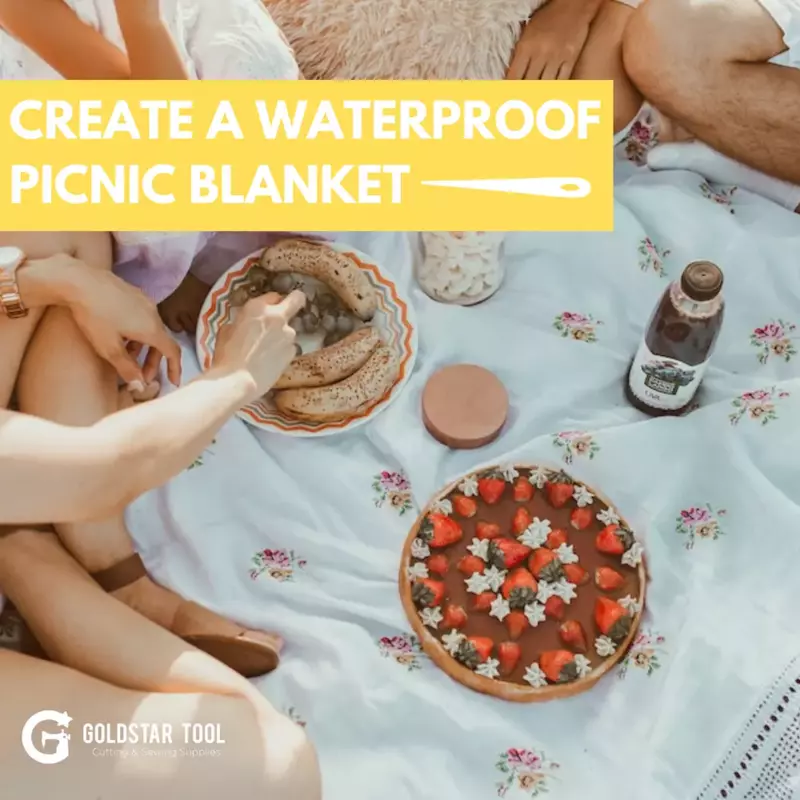Create a Waterproof Picnic Blanket
2020-07-22
Wait a second. All those years with damp blankets could have been worry-free? Yes, with a pure water-resistant fabric, you can help protect cotton and wool blankets from water. That means you can lay out a blanket for a picnic without worrying about the moisture from the sprinklers, lawn fun, or even a recent storm.
What You'll Need:
You'll need fabric, a sewing machine, a hammer, a snap kit, and 2-inches of twill tape. But, the amount of material you'll need will depend on the blanket you want to protect.
To get started, find your go-to outdoor blanket and measure it. Take that measurement and add ½-inch to all the sides; get a bit more than that, so you have room to trim and match.
But then you're onto the next challenge of which fabric is right for you. You can browse through your local fabric shop to get a feel for available colors and patterns in either oilcloth or ripstop nylon. These are two reliable and relatively easy to work with materials that are also waterproof.
Step One: Hem and Twill Tape
First, you'll want to cut the fabric to match the blanket with an extra ½-inch around all the sides.
Then, you'll want to fold those edges over ½-inch to give it a hem and place the twill tape over that fold. The twill tape can move pretty quickly, so pin it into place. Give the twill tape and hem a straight stitch through the sewing machine all the way around. Miter the tape where the corner turns.
Step Two: Snaps and Backing
With a hammer, you can effortlessly put the snaps into place along the blanket's edges and the blanket backing (waterproof attachment you just created). The snap kits are straightforward to install, but every kit is a tiny bit different. Make sure to follow the instructions specific to your kit. The only tools you should need for the snaps is a hammer.
Try to space the snaps about 10 to 12 inches apart and go all the way around the border. Also, be sure to attach the "males" to the same fabric, either the blanket or the backing.
After the snaps are in place, then you're good to go! You can store the blanket and backing together in your car for easy access at the park, or store them separately at home.





